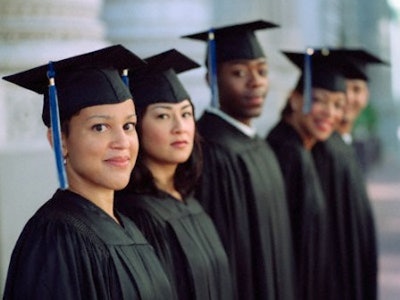 President Obama proposes colleges and universities be measured by affordability and quality.
President Obama proposes colleges and universities be measured by affordability and quality.In 2005, the Washington Monthly magazine set out to “rate schools based on what they are doing for the country — on whether they’re improving social mobility, producing research, and promoting public service” through its annual college rankings guide. The approach was developed as an alternative to the U.S. News & World Report annual rankings, “which relies on crude and easily manipulated measures of wealth, exclusivity and prestige,” says the Washington Monthly.
On Monday, the Washington-based investigative and policy analysis magazine released its 2013 college rankings just a few days after President Barack Obama proposed that the federal government develop a ratings system to measure colleges and universities based on their affordability and quality. Among the rankings, Washington Monthly editors have added a new category, “Best Bang for the Buck,” which measures economic value students receive per dollar spent at a given college or university.
“We did that without any knowledge that the administration was going to come out with a proposal to create a rating system almost exactly like ours,” said Paul Glastris, the Monthly’s editor in chief.
“We were already set to launch our college guide today and all of a sudden in the middle of last week the president gives a speech saying, ‘Hey, I’m going to do this,’” explained Glastris. “I think it’s a question of these ideas are in the air. I think we’ve helped put them there. And the administration, to its credit, is aggressively moving in that direction.”
Glastris noted that, while the Obama college ratings idea has to be fleshed out in much greater policy detail, the Monthly’s Best Bang for Buck ranking addresses similar concerns on how well schools are keeping tuition affordable, faring with their graduation rates, providing access to low-income students and producing gainfully-employed graduates.
“We added [the Best Bang for the Buck] measure to our main rankings for the first time last year and then this year we broke it out into its own separate ranking,” Glastris said.
“We decided to do it because it was really an outgrowth of what we’ve been doing,” he added. “We thought we should be able to tell average students of modest means which college would really be best for them in their career and their life.”
In its primary traditional rankings, the Monthly examines the schools based on their contribution to the public good in three major categories: social mobility (outreach to and graduating low-income students), research (producing innovative scholarship and Ph.D.s) and service (facilitating student transition to public service). The lists include rankings of national universities, liberal arts colleges, baccalaureate colleges, community colleges and master’s universities.
A number of Minority-Serving Institutions, including historically Black colleges and universities (HBCUs) and Hispanic-Serving Institutions (HSIs), appear on the various lists. The nation’s top two baccalaureate colleges are HBCUs with Elizabeth City State University ranked first and Tuskegee ranked second.
The nation’s overall top Best Bang for Buck institution is Amherst College. The top two national universities are University of California (UC) schools with UC-San Diego ranked first and UC-Riverside ranked second.
Dr. Walter Kimbrough, president of Dillard University, said he was pleased to learn that the New Orleans-based historically Black school is fourth in research spending among the top 255 liberal arts colleges. The school is the 74th best overall among the liberal arts colleges.
In research, Dillard is “right behind Pomona, Swarthmore, and Harvey Mudd. That’s pretty good,” Kimbrough said.
He noted that the Monthly’s rankings enable institutions, such as HBCUs, that enroll a disproportionately high number of low-income students to gain recognition for the work they do that contributes to social mobility. Eighty-seven percent of Dillard students receive Pell grants.
“The Washington Monthly does a pretty good job because they provide some broader assessment measures,” he said. “They factor in social mobility, which helps schools like ours. It’s a fairer assessment and it gives us a chance to compete with everybody.”















